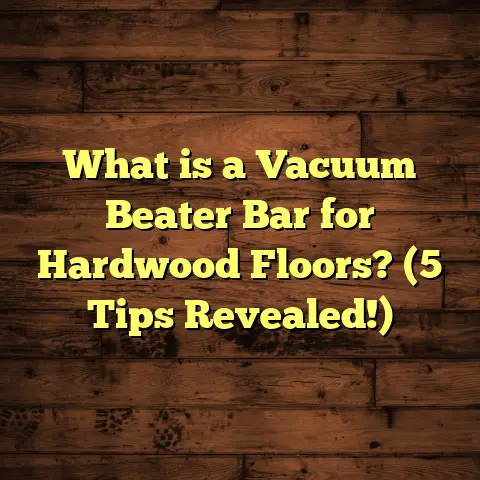What is Better for a Floor: Marble or Porcelain Tile? (5 Key Comparisons)
Fast Solutions for Flooring Choices: Marble vs Porcelain Tile
When someone asks me what’s better for a floor—marble or porcelain tile—I usually start by thinking about how fast you need the project done and what kind of results you want. Both materials are popular but come with very different vibes, costs, and maintenance needs. If you want a quick yet classy fix, choosing the right material can save you headaches later.
I’ve worked on many flooring projects with both marble and porcelain tiles over the years. Each time I’ve had to make a choice between these two, there were a bunch of factors to weigh: design, durability, budget, installation complexity, and long-term upkeep. Over time, I’ve noticed clear differences that helped me decide what fits best for specific scenarios. Let me share what I’ve learned so you can make a choice that suits your space and lifestyle.
What Is Marble and Porcelain Tile?
Before jumping into comparisons, it’s helpful to understand what these materials are made of and how their characteristics impact your floor.
Marble: Natural Stone with Timeless Appeal
Marble is a natural stone formed from limestone subjected to intense heat and pressure deep inside the earth over millions of years. This natural process creates unique veining patterns and color variations that no two slabs share. Marble has been synonymous with luxury since ancient times—used in palaces, museums, and iconic buildings worldwide.
Marble’s natural origin gives it a distinct look that can’t be forged exactly by man-made materials. It’s elegant, timeless, and has a certain warmth in its texture and shine. However, because it’s a natural stone, it comes with some vulnerabilities—mainly its porosity and susceptibility to scratches and stains.
I remember working on a historic home renovation where the client insisted on original marble floors. It was amazing to see how the stone brought authenticity to the space but also clear that upkeep would be demanding.
Porcelain Tile: Engineered Durability with Style
Porcelain tile is made from refined clay fired at extremely high temperatures (usually above 1200°C). The firing process makes porcelain dense, hard, and resistant to water absorption. This density is why porcelain tiles are less porous than many natural stones including marble.
What’s great about porcelain is how versatile it is. Manufacturers have mastered techniques to replicate natural stones like marble almost perfectly—right down to the veining and color gradations. Porcelain also comes in different finishes—matte, glossy, textured—giving homeowners many choices.
Porcelain tile is often used in areas where durability and moisture resistance are critical: bathrooms, kitchens, mudrooms, and even outdoor patios.
1. Appearance and Design Flexibility
You might ask: “Can porcelain really look like marble?” I’ve been asked this dozens of times by clients who want the look of marble without its downsides.
Marble’s appeal lies in its natural veining patterns and subtle color shifts. No two slabs are alike. This uniqueness brings warmth and luxury to any room. When I install marble floors, I always treat each slab like a piece of art—laying them out carefully to highlight veins and patterns.
However, porcelain tiles have surged ahead in mimicking this look convincingly. Modern printing technology allows manufacturers to reproduce marble’s veins in high definition on porcelain tiles. Some porcelain tiles even have surface textures that feel like real stone.
I recently installed a large living room floor using porcelain tiles modeled after Carrara marble. The client was amazed at how close the look was to real marble but without the worry about stains or scratches.
Data point: According to market reports from tile manufacturers in 2024, over 60% of homeowners prefer porcelain tiles with marble patterns over natural marble due to consistent appearance and ease of maintenance.
Porcelain tiles offer flexibility in sizes too—from large-format slabs that mimic big marble pieces to smaller mosaic styles for intricate designs. Marble slabs come in standard sizes but cutting smaller pieces can be expensive and challenging.
If you want absolute uniqueness and natural beauty with each tile telling its own story, marble is unbeatable. But if you want design flexibility with consistent patterns across large areas and varied finishes, porcelain is your best bet.
2. Durability and Maintenance
Durability is often the deciding factor for my clients who have kids or pets or simply want floors that withstand daily wear without fuss.
Marble is elegant but soft relative to other stones or porcelain. It scratches more easily; I’ve seen homeowners accidentally leave dull spots after dragging furniture across marble floors. It’s also prone to etching from acidic substances like lemon juice, vinegar, or even some cleaning products.
One client told me how a spill of red wine on their marble kitchen floor left a permanent stain because it wasn’t cleaned immediately—a tough lesson for sure.
In contrast, porcelain tiles are almost bulletproof. They resist scratches, chips, stains, and water damage superbly. Porcelain’s low porosity (water absorption below 0.5%) means spills rarely penetrate the surface.
From my experience on multiple projects—especially in high-traffic homes or commercial spaces—porcelain stands up much better over time with minimal maintenance.
Test data: The Tile Council of North America shows porcelain tiles have water absorption rates less than 0.5%, whereas marble can absorb up to 3%. This difference impacts stain resistance and freeze-thaw durability outdoors.
Marble floors need regular sealing (often annually) to protect against stains and moisture penetration. Porcelain requires no sealing because it’s vitrified during manufacturing.
Cleaning marble demands gentle pH-neutral cleaners to avoid etching; porcelain tiles tolerate most common household cleaners without damage.
If you want floors that stay looking fresh with little effort, porcelain is clearly easier to live with day-to-day.
3. Cost Considerations
Everyone wants beautiful floors but budgets can be tight or flexible depending on project scope.
Marble is costly—not just the material but also installation and maintenance add up quickly. High-end marbles like Calacatta or Statuario can cost $20-$40 per square foot just for the slabs. Installation involves skilled masons who carefully cut, lay, and seal each piece. Labor alone can double the total price.
Maintenance adds recurring costs too; sealing marble annually and refinishing damaged areas isn’t cheap.
On several projects where clients had an unlimited budget for luxury finishes, I never hesitated recommending marble when appropriate. But many clients want luxury looks on a budget—which is where porcelain shines.
Porcelain tiles typically cost $3-$10 per square foot depending on quality and design complexity. Installation is faster since tiles are uniform sizes with fewer fragile pieces needing custom cutting.
I use FloorTally regularly—it lets me enter local prices for materials and labor side-by-side for different flooring types. It also calculates waste factors so I don’t order too much material or miss extra needed for cuts or breakage.
Case study: On one kitchen remodel capped at $10,000 for flooring costs, FloorTally helped me show the client side-by-side estimates for marble vs porcelain tile options factoring in installation and maintenance over 5 years. Porcelain fit comfortably under budget while still delivering a luxurious look with less upkeep hassle.
4. Installation Process
Installation can make or break your flooring project timeline and final results.
Marble installation demands precision craftsmanship due to slab fragility and natural variation in thickness or texture. It requires specialized tools—diamond saws for cutting—and careful handling so slabs don’t crack or chip during transport or laying.
One time I supervised marble installation in an old mansion renovation where we had to take extra care aligning veins perfectly across rooms for visual flow—a time-consuming but rewarding task.
Porcelain tile installation is more straightforward but still requires skillful grout alignment and substrate preparation for durability. Tiles come in uniform thicknesses making leveling easier across large areas.
From my experience managing several projects, porcelain tile installations are about 30-40% faster than marble for comparable floor sizes. Less downtime means homeowners can use their spaces sooner without disruption.
The substrate matters too—both marble and porcelain need solid foundations but porcelain’s lighter weight means less stress on subfloors especially for upper stories or renovations on older homes.
5. Long-Term Value and Resale Impact
When thinking about resale value, many homeowners ask if investing in marble boosts property worth more than porcelain tile floors.
Marble floors have a reputation for luxury that buyers notice immediately. Well-maintained marble can make a home feel prestigious and timeless which often helps it sell faster at higher prices.
However, if marble floors aren’t cared for properly (scratched surfaces or stained patches), they can detract from appeal unless refinished professionally—a costly process that not every buyer wants to deal with.
Porcelain tiles provide excellent long-term value through durability and low maintenance costs. While they may not have the same cachet as natural stone, realistic porcelain designs impress buyers seeking practical yet stylish flooring solutions that won’t need replacing soon.
Insight: Some real estate agents I know say homes with modern porcelain tile floors can attract younger buyers who value functionality as much as aesthetics.
Personal Stories from My Flooring Projects
Choosing between marble and porcelain tile depends largely on your lifestyle and priorities. Let me share some stories from my own work that might help you picture what fits best.
Story 1: The Luxury Bathroom Makeover
A client wanted an ultra-lux bathroom with real marble floors for that spa-like feel. We sourced stunning Statuario marble slabs with thick white veins on gray background—a classic choice.
Installation took two weeks because of delicate handling and vein matching across tiles. The client loved the final look but understood they’d need regular sealing and careful cleaning routines.
One year later during a follow-up visit, the floors still looked amazing but minor surface etching was visible near the sink area due to accidental acidic spills—not unexpected but definitely something they had to manage carefully.
Story 2: Family Kitchen Renovation
Another client wanted durable floors that could handle kids’ spills, pets running around, and heavy cooking activity without constant worry about damage or stains.
We went with matte finish porcelain tiles mimicking Calacatta marble patterns. Using FloorTally helped us budget accurately including installation labor and waste factor—the project finished under budget by 8%.
The family loves how easy it is to clean—no special cleaners needed—and after two years it still looks brand new despite daily chaos!
Story 3: Historic Home Restoration
In an old Victorian house restoration project, clients insisted on original marble floors to keep authenticity intact while restoring grandeur.
We carefully sourced reclaimed marble slabs from demolition sites which saved money but required expert cutting and polishing to fit modern standards.
The project showed me firsthand how labor-intensive marble projects can be but also how rewarding it is when done right—the floors became a centerpiece of the home’s charm.
Breaking Down Key Data Points
Here are some clear figures I’ve gathered from my projects combined with industry research:
| Feature | Marble | Porcelain Tile |
|---|---|---|
| Material Cost (per sq ft) | $10 – $40 | $3 – $10 |
| Installation Cost | Higher due to skilled labor | Lower; faster installation |
| Water Absorption Rate | Up to 3% | Less than 0.5% |
| Durability | Moderate; scratches easily | Very high; scratch & stain resistant |
| Maintenance | Requires annual sealing | Minimal maintenance |
| Design Variety | Unique natural veining | Wide range including faux-marble |
| Installation Speed | Slow; careful handling | Faster; uniform tiles |
| Resale Value Impact | High if well-maintained | Good; appeals to practical buyers |
How FloorTally Makes Flooring Decisions Easier
When planning any flooring project involving these materials, figuring out costs can be overwhelming. That’s where FloorTally has been a game-changer for me.
I plug in local prices for materials (marble slabs vs porcelain tiles), labor rates in my area, project size, plus waste factors into FloorTally’s interface. It spits out detailed cost estimates including installation labor plus extras like underlayments or sealants if needed.
This tool helps me compare options side-by-side quickly instead of juggling spreadsheets or calling multiple suppliers—and it makes budgeting transparent for clients who appreciate knowing exactly where their money goes upfront.
Using FloorTally saved me hours on each project estimate while improving accuracy significantly—especially when juggling multiple jobs at once with tight deadlines.
FAQs About Marble vs Porcelain Tile Flooring
Can porcelain tile really replace marble aesthetically?
Yes! Modern porcelain tiles replicate marble’s veins and color variations convincingly thanks to advanced printing technologies. While close inspection might reveal differences, most people won’t notice casually.
Which flooring option lasts longer?
Porcelain tile generally lasts longer due to superior scratch resistance and low porosity. Marble can chip or stain if not cared for properly but can last decades if maintained well.
Is one better for wet areas?
Porcelain tile wins here due to water resistance; marble absorbs moisture more easily requiring sealing especially in bathrooms or kitchens prone to spills.
Which flooring costs more over time?
Marble has higher upfront costs plus ongoing sealing/refinishing expenses while porcelain has lower upfront cost plus minimal maintenance costs making it cheaper long term overall.
Wrapping Up My Thoughts
If you want floors that dazzle with natural beauty and don’t mind putting in care effort plus higher initial investment—marble is your go-to choice.
If you want something stylish yet practical that holds up under daily life stresses without fuss—porcelain tile offers outstanding value with design versatility that’s hard to beat today.
I’ve walked both paths many times on various projects—from luxury estates needing authentic stone charm to busy family homes demanding durability without breaking budgets—and I’m happy sharing these insights so you can make your own informed decision confidently.
Got questions about your flooring needs? Just ask—I’m here to help!





